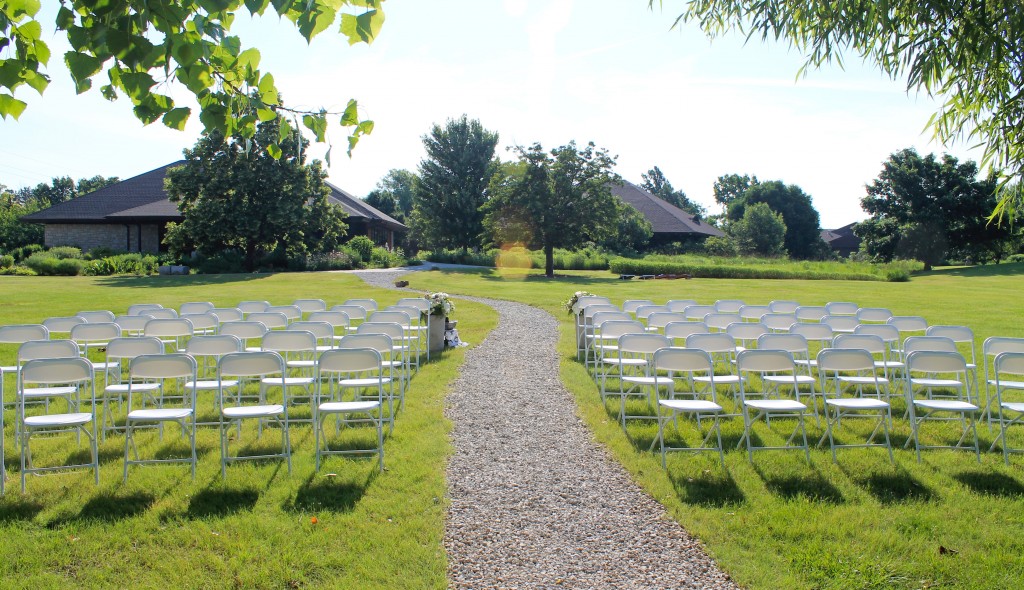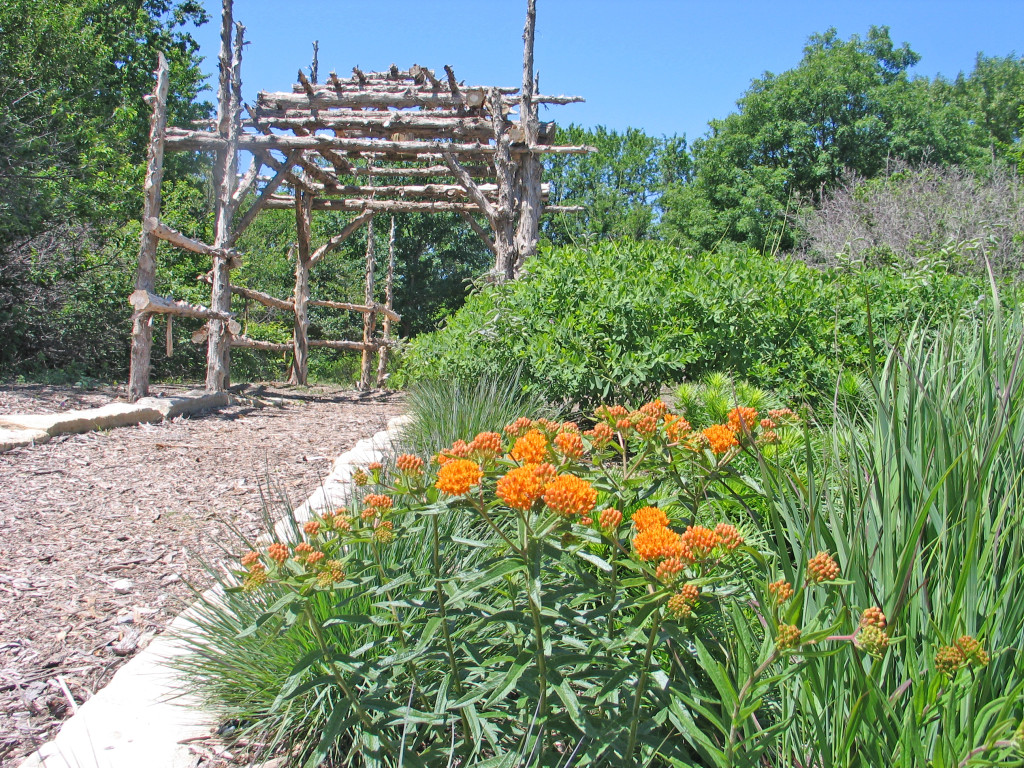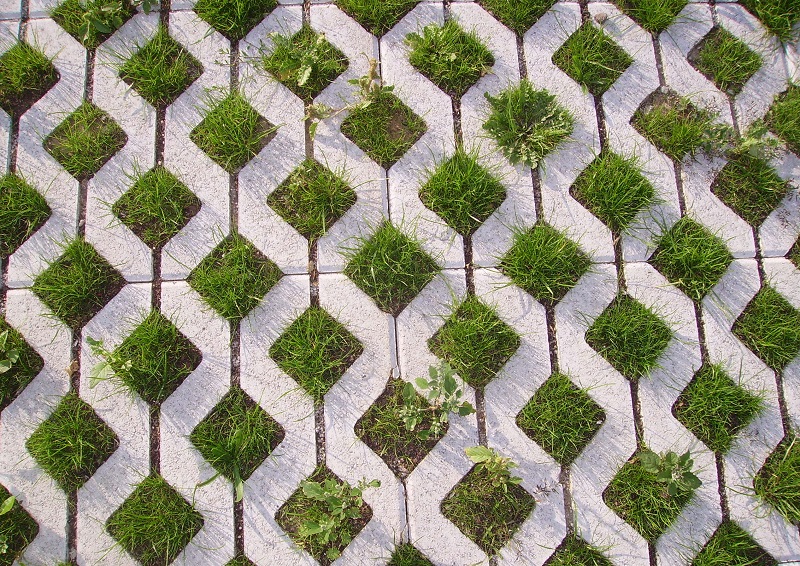On a cool crisp morning in October, I meandered through the Prairie Window Project here at the Arboretum. The frost was clinging heavily on all the plants. I would have been wet if not for the pathway leading me between the tall grasses. It made me thankful for that wide gravel path.
This path is less than ideal, because the rocks are loose and make it hard to walk. It will take smaller stones and work compacting the path to make it easier to navigate. It made me think about garden paths in general. What are the best paths for gardens?
Rock Paths
Stone is a fantastic pathway material. It has a natural look and can be made very hard and stable. We have many paths with stone and they seem to hold up to our climate well.
To establish a stone path, we often dig out the soil two to three inches deep to get a good base for the path. We have used edging (metal, wood, or larger stone) or established paths without edging. Both strategies work fine. Edged paths look more formal, while non-edged paths tend to blend into their surroundings better. We spread larger limestone (1-2 inch stone) in the bottom of the trench and then cover with smaller limestone (3/4 inch) with fine pieces to weave and bind the path together. It is good to have the path slightly higher than the ground so that water does not stand on the path. Also, consider drainage and water flow to make sure your path does not become a dam and impede water movement. We usually add new limestone every two to three years as needed, because the stone will naturally breakdown over time.
Note about other stone: We have used pea gravel and sand, but neither makes a stable walking surface.
Mulch Paths
Mulch paths are the most organic substrate. They naturally blend into the landscape, while softening the edges of display beds and lawns. Developing a new path is similar to rock paths. As with rock, mulch decomposes over time and needs to be replenished. Larger pieces mixed with finer pieces interlock the mulch and keep it firm. It will never be as firm and hard as a rock path, but makes a nice cushy surface in which to walk through your garden.
Straw Paths
I have used straw in my garden and it makes a wonderful path. The advantage of straw in this setting is that at the end of the growing season, it can be tilled into the soil to add organic matter to the soil. A layer of two to three inches of straw will help with weed control and keep your feet from getting muddy. I have seen it used around most vegetables. Straw moderates soil temperatures and reduces evaporation.
Semi-permeable pavement
The use of porous concrete or concrete with holes filled with sand is becoming popular. These solutions allow water to infiltrate quickly and then be held, released slowly and/or diverted to holding basins. This has merit as we think about rain gardens and capturing water from our landscapes. The concrete with holes are filled with sand and can be planted with grass, sedges, or some other low growing vegetation that can be walked on. These stepable plants quickly blend the path into the landscape. Certainly, this is the most costly of the path options, but it can do so much more than just a rock or mulch path.
Pathways are an important component of any landscape. They lead you through the garden. A well designed landscape has paths you don’t notice. Paths complement the garden and harmonize everything within your yard.





